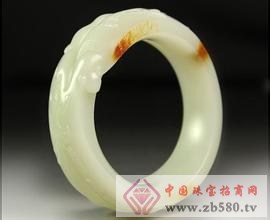Around the Great Song Dynasty, several non-Han regimes were erected. Among them, the gold and Mongolian established by the Liao and Jurchen groups established by the Qidan people in the northern grassland were not only brave and good, but also made the Song Dynasty bow down. And its colorful jade culture is not inferior to the Great Song. The center of Liao Dynasty is located in the eastern part of Inner Mongolia and western Liaoning. Archaeologists have so far discovered more than 60 Liao Dynasty tombs, Taki and ruins of jade wares unearthed, and about 400 pieces of Jade wares from the Liao Dynasty (group), more than 2,000 pieces. . Among them, the Princess Chen Guo and the burial tomb found in Naiman Banner, Inner Mongolia, are the most abundant tombs of the Qidan royal family. The archaeological materials of the Jin Dynasty jade articles are mainly found in Heilongjiang, Jilin, and the Beijing area after the migration of the Jurchen Longxing. Both Qidan and Jurchen are nationalities that have achieved great achievements on horseback. Their jade culture, in addition to being influenced by the Central Plains and the Western Regions, also has distinct national and regional characteristics. Take the Liao Dynasty jade unearthed from the tomb of Princess Chen Guo as an example. It has the essential costumes of the horseback nationality and the decorative jade on the harness, such as jade silver chest strap, jade silver horse, and jade silver belt. Etc. There are also tools and equipment necessary for nomadic fishing and hunting, such as jade handle silver cones, jade handle silver knives, jade arm shackles, etc.; there are also various types of jade ornaments that reflect the grassland style, such as Xiao Shengpei, Pisces, Spiral-shaped pebbles, cross-necked peony, Hongyanpei, etc.; as well as the reflection of Buddhist beliefs, such as the jade and jade, are significantly different from the jade articles in the Tang and Han dynasties. In addition, the Qidan people also like the bright agate, amber, crystal products, which is also different from the Tang and Song jade. The grassland of the Jin Dynasty jade is more interesting than the Liao Dynasty. The “Spring Water Jade†and “Akiyama Jadeâ€, which are unique to the grassland people in the spring and autumn seasons (“Spring Festival†and “Autumn Festivalâ€), have become an important theme of the Jin Dynasty jade. The mountain forest beasts are the subject of performance, but they are quite different from the jade carvings of the birds and birds in the Song Dynasty. However, the close exchanges between the Jin Dynasty and the Song Dynasty's economy and culture are reflected in the jade, and there are also difficulties in entanglement with each other. For example, the jade turtle unearthed from the tomb of Ugulunwolun was unearthed from the Sichuan-Guangxi-Song Dynasty. The jade turtles are very similar, and the jade articles such as Shuanghepei, Folding Flowers, and Wrapped Bamboo Festivals are unearthed in the tomb of Changgou. The subject matter is full of the interest of literati paintings, so many scholars think that they are northern Song jade, or It was made by Han Chinese jade workers who were taken by the Jurchens. Full Blackout Curtains,Custom Full Blackout Curtains,Good Total Blackout Curtains,Full Shading Curtains SHAOXING DONGAN TEXTILE CO.,LTD , https://www.yakamokhd.com